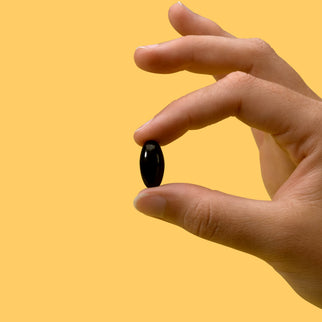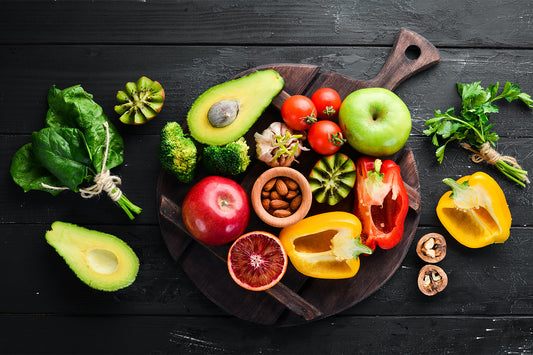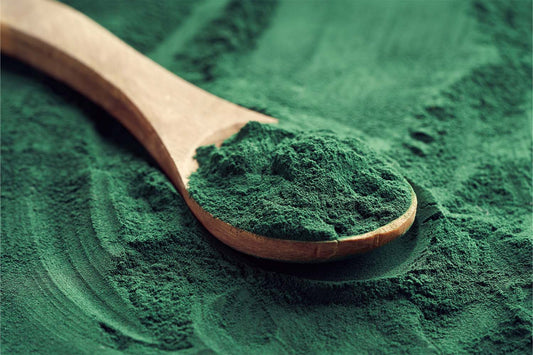We are constantly told that we should get more vitamin C, protein, and other important nutrients in our diet, but there are many important nutrients that aren’t as widely discussed. Unlike the popular nutrients we hear about all the time, alpha-linolenic acid often flies under the radar.
Although it should be an important part of a healthy and balanced diet, there is not much discussion on how much you need to consume each day. Let’s look at what you should know about ALA in your diet.
What Is Alpha-Linolenic Acid?
Alpha-linolenic acid (ALA) is a type of omega-3 fatty acid, which are healthy, polyunsaturated fats in the body that help form the building blocks of your cells. By forming the building blocks of these cells, they influence how your cells interact with each other and support the healthy function of multiple systems in your body.
ALA itself is a type of essential fatty acid found in plants. Your body cannot create this nutrient on its own, so you need to get it from food. On the bright side, there are many dietary sources of ALA in an everyday diet.
Alpha-linolenic acid is often confused with alpha-lipoic acid since they share the same acronym. Alpha-lipoic acid is a type of antioxidant produced by the body, which helps support cell health during exposure to free radicals.
That said, when we talk about ALA here, we’ll be referring to alpha-linolenic acid, the omega-3 fatty acid, rather than alpha-lipoic acid, the antioxidant.
What Are the Benefits of Consuming ALA?
A regular intake of ALA offers both direct and indirect beneficial effects on the body. Some of the potential direct health benefits of consuming ALA include:
- Supporting your cardiovascular health
- Supporting cholesterol levels already within the healthy range
- Helping to maintain a healthy blood pressure
- Supporting blood triglyceride levels already within the healthy range
- Supporting overall brain health and healthy cognitive function
Your body then uses alpha-linolenic acid to create two other forms of omega-3s, docosahexaenoic acid (DHA) and eicosapentaenoic acid (EPA). These two essential fatty acids offer unique benefits by serving their own functions in the body.
How Much ALA Do You Need Per Day?
With all the possible benefits of consuming ALA omega-3s, it should be a regular part of your diet. Especially since the conversion rates from ALA to DHA and EPA are so low, it is important to get a considerable amount of omega-3 on a daily basis. Experts generally recommend consuming at least 1.6 g of ALA per day for men and 1.1 g per day for women.
Because DHA and EPA are important for supporting the healthy development of a baby during pregnancy, pregnant and nursing women should consume more ALA. Experts recommend that women consume 1.4 g of ALA during pregnancy and 1.3 g a day when breastfeeding.
Fortunately, for many, obtaining their daily needs for ALA is not difficult, as the essential nutrient can be found in many foods, many of which are part of a regular diet. If you’re concerned about getting enough nutrients in your diet, talk to your healthcare provider.
Where Can You Find Alpha-Linolenic Acid?
Alpha-linolenic acid is primarily found in plant foods, and the wide range of options makes it easy to incorporate into an everyday diet.
Some of the most common and most abundant food sources of ALA omega-3 include:
- Chia seeds
- Hemp seeds
- Leafy greens
- Plant oils, like canola or flaxseed oil
- Pumpkin seeds
- Soybeans
- Sunflower seeds
- Walnuts
The added benefit of consuming ALA through plant foods is that these foods also have antioxidants. By consuming antioxidants, you can support healthy cell function and the healthy aging of cells.
One of the biggest advantages of consuming ALA is that you don’t have to eat any of these above foods directly to enjoy the benefits of this essential nutrient. Each option can be easily incorporated into meals you already have. For example, you can get more omega-3s by adding walnuts to your oatmeal, hemp seeds to your smoothies, or a little bit of canola oil to your salad.
Is Alpha-Linolenic Acid All You Need?
Your body uses ALA to convert it into DHA and EPA, two other highly beneficial essential fatty acids — in fact, they are even more beneficial than ALA. Unfortunately, though, your body isn’t able to use all of the ALA you consume to make DHA and EPA. Only a small percent of the ALA you eat is actually converted into these other two fatty acids.
There is no finalized daily recommended amount of DHA and EPA omega-3. However, some researchers have suggested consuming 250 to 500 mg of combined EPA and DHA a week.
ALA is a good nutrient to include in your diet, but it isn’t one you need to stress about since you can find it in so many everyday foods. On the other hand, you have to be more thoughtful about your DHA and EPA omega-3 intake since they are harder to come by in a standard diet.
DHA and EPA offer many benefits, like:
- Supporting blood triglyceride levels already within the healthy range
- Supporting healthy cognitive function
- Supporting heart health
- Supporting overall joint health
- Helping to maintain healthy skin and hair
How Can You Get More EPA and DHA?

With all their potential benefits, it’s a good idea to focus on obtaining EPA and DHA in your diet. These two essential fatty acids can be found in three key dietary sources.
Fatty Fish
The most well-known source of EPA and DHA is oily, fatty fish, like mackerel, salmon, sardines, and tuna. The American Heart Association recommends consuming two three-ounce servings of these fatty fish per week. However, not everyone has the time or desire to cook fish twice a week. This is where dietary supplements come in, providing more convenient options for obtaining DHA and EPA.
Fish or Krill Oil Supplements
One of the most common supplements is fish oil supplements, which come from the pressed oil of fatty fish. These supplements are much easier to include in a daily routine, as they provide a day’s worth of omega-3s in either a capsule or a spoonful.
Taking too many fish oil supplements can have some unpleasant side effects, like fishy burps, indigestion, and constipation. Krill oil supplements are an alternative option, but they provide many of the same drawbacks. Not to mention, neither of these avenues is an option for anyone with a seafood allergy or a strong distaste for fish.
Algae Supplements
If you’ve ever been told that fish is the only way to get DHA and EPA omega-3s, know that they were mistaken. In fact, these two omega-3s can be found in the food that fish eat — algae. By getting your omega-3s from algae, you can get your omega-3s directly from the source.
To top it off, algae is a marine plant, so it is the perfect option for anyone on a plant-based diet. It is also a realistic option for anyone with a seafood allergy. Even those who can eat fish can benefit from choosing an algae-based omega-3 supplement as an option. The omega-3s from Nannochloropsisalgae are absorbed by the body 1.7x better than those from fish or krill oil, as they have a higher bioavailability. This higher bioavailability means your body can put these omega-3s to use faster.
On top of providing an excellent source of omega-3s, algae also offers the additional benefit of supplying helpful antioxidants, like many plant foods, which can support your overall health and wellness.
iwi life takes all the extra mental energy out of the process. With our daily omega-3 supplement, you can obtain all of your needed DHA and EPA fats in just one softgel, making it an easy addition to your routine. Each softgel offers 250 mg of combined EPA and DHA omega-3. When taken every day, it’s more than enough to meet your weekly needs.
Nourish Yourself With the Omega-3s You Need
ALA is a valuable nutrient to add as part of your everyday diet, but you shouldn’t stress about getting enough of it in your diet. Instead, turn your attention to DHA and EPA omega-3s. Both of these essential fatty acids make for important additions to your diet, but that doesn’t mean they have to be hard to find.
iwi life omega-3 supplements make it easy to get these two vital essential fatty acids from one simple place. Explore our complete family of iwi life products for yourself and see the power of algae-based omega-3s.
Sources:
Alpha-lipoic acid Information | Mount Sinai - New York





















